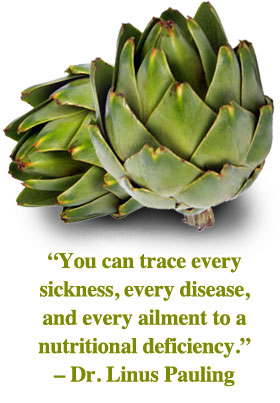A Hidden Danger with Nuts, Grains, Beans and Seeds
(retrieved from http://naturalbias.com, 9/25/12)
 Whole grains, beans, nuts, and seeds are widely recognized as healthy foods, but without taking a few important precautions, they may not be nearly as healthy as you think.
Whole grains, beans, nuts, and seeds are widely recognized as healthy foods, but without taking a few important precautions, they may not be nearly as healthy as you think.
Most people buy grain products that are heavily processed and nuts that are roasted and salted. The processing involved reduces the nutritional quality of the food and usually involves the addition of unhealthy additives. If it’s not enough that people eat these processed varieties on a regular basis, the problem is made worse by some of the undesirable substances that exist in grains, beans, nuts, and seeds when they’re not prepared properly. As such, it’s best to buy these foods in their natural and whole form, or as close to it as possible, and prepare them yourself. If that’s not possible, you should at least buy from companies that have already done the work for you.
Smart Selection
It’s always best to eat natural whole foods and this certainly applies to nuts, grains, beans, and seeds. Unfortunately, it’s difficult to find these foods in their raw form at a typical grocery store, and even if you do, it’s unlikely that they’re organic which means that they’re more likely to contain chemical residues and be less nutritious. The best place to find a large selection of raw organic nuts, grains, beans, and seeds is a local health food store. Once you find a place to buy high quality varieties of these foods, you’ll have the ability to properly prepare them and make them into the truly healthy foods that they’re often claimed to be.
The following are a few problems that are inherent with these foods and some suggestions on how to resolve them:
Phytic Acid and Reduced Mineral Absorption
Phytic acid is a substance found in cereal grains, nuts, seeds, and legumes that prevents premature germination and stores nutrients for plant growth.1,2,3,43,44 Research has shown that it also reduces the absorption of the important minerals calcium, magnesium, iron, and zinc when consumed by humans.4,5,6,7,43,45,46 Phytic acid also has potential to reduce the digestibility of protein.17 This doesn’t only apply to the minerals and protein in the food containing the phytic acid, but also the food that you eat with it.
Frequent consumption of foods that contain phytic acid can lead to nutrient deficiencies and can cause a wide variety of issues including skin problems, impaired appetite, mental fatigue, altered gene expression, and impaired immunity due to zinc deficiency,8,9 anemia and poor development in infants and children due to iron deficiency,12 and increased risk of rickets and bone softening due to calcium deficiency.10,11. Although it’s rare for these problems to occur in developed countries as a result of nutrient deficiencies, even a mild deficiency is enough to detract from optimal health and cause undesirable symptoms. For example, a mild zinc deficiency, which can result after just a few months of consuming just 1 milligram per day less than needed, can reduce testosterone production and alter immune function.9
Enzyme Inhibitors and Impaired Digestion
Many plant foods contain protease inhibitors, also known as trypsin inhibitors, which block enzyme function and protect plants from insects.13 These inhibitors can also prevent protease enzymes from digesting protein in the human digestive tract which can burden the pancreas with the need to produce more enzymes. Based on animal research, it’s believed this burden can potentially lead to hypertrophy and cancer of the pancreas in humans.14,15 According to the work of Dr. Edward Howell, this increased requirement for digestive enzyme production can also deplete the body of valuable resources needed for other physiological functions.16
The Benefits of Soaking
Cereal grains, beans, nuts, and seeds are all considered plant seeds, and when a plant seed undergoes germination, a lot of changes occur that provide the growing plant with needed nutrients. This includes the breakdown of phytic acid and complex carbohydrates, the inactivation of protease inhibitors, and the increased availability of vitamins and minerals, all of which increase the nutritional value of the seed and improve its digestibility.
In nature, germination typically occurs when a plant seed encounters conditions that are favorable for its growth which typically involves water. As such, the germination of grains, nuts, beans, or seeds can be easily initiated by soaking them in water. Although mostly focused on grains and beans, research has shown soaking to be quite effective for the reduction of phytic acid in as little as 12 hours as well as the subsequent increase in mineral availability18,19,20,21,22,23,24,25,47 and for the reduction of protease inhibitors starting at about 36 hours19,22,28,29. In both cases, the amount of reduction increases with time, especially for protease inhibitors. Soaking can also increase the content of some components of the vitamin A, B, C, and E complexes,37,38,39 and through the activation of amylase enzymes, helps to break down complex carbohydrates and improve their digestibility.40,41 This latter benefit is especially important for optimal digestive health because it will reduce the possibility of complex carbohydrates from being fermented in the intestines and contributing to the proliferation of undesirable bacteria.
When time is limited, the combination of soaking and cooking has been shown to be much more effective than only soaking for a short duration.30,25 However, because cooking has also been shown to be less effective at reducing phytic acid,32 soaking is still important. For grains and beans, light cooking is generally a good idea anyway since it further improves digestibility and deactivates natural plant toxins that may still exist after soaking.
The seeds being soaked can easily absorb chemicals from the water or container that they’re soaking in, and in some cases, such chemicals may be even more of a concern than the phytic acid and protease inhibitors that you’re going out of your way to avoid. As such, it’s important to use a glass container and filtered water. Because phytase enzymes tend to function optimally at a slightly acidic pH at warmer temperatures,35,36 it may also be beneficial to use warm water and increase its acidity with something like lemon juice. It’s also believed that adding sea salt will help to neutralize the enzyme inhibitors.42
The Benefits of Fermentation and Fermented Foods
Similar to soaking, fermentation is another method of reducing phytic acid and protease inhibitors that has been shown to be even more effective in some cases.18,34,23,45 This is because the lactic acid bacteria typically used for fermentation naturally produce the phytase enzymes that break down phytic acid.48 However, this generally applies to grains and beans more so than nuts and seeds and is a slightly more involved process that usually involves the use of a starter bacteria culture.
The consumption of fermented food has been shown to improve the intestinal balance of beneficial lactic acid bacteria.49 Based on this and the phytase producing capability of the bacteria, the consumption of fermented foods may be another effective way to reduce the potential of dietary phytic acid impairing mineral absorption.50
Products that are Already Soaked
Although soaking grains, beans, nuts, and seeds is very easy, some people might consider it too much of a hassle. Furthermore, products such as bread, nut butters, or snack bars cannot be soaked unless you make them yourself. Fortunately, there are some food manufacturers that go through the trouble for you.
For grain based products, Food for Life is a highly regarded company that soaks the grains that go into many of their products. They have a wide range of products ranging from cereals, pastas, breads, and tortillas.
For nuts, Better Than Roasted is an excellent line of raw organic nuts and seeds that are soaked prior to sale. They also have a great line of nut and seed butters that are made from the same nuts. The almond butter is excellent!
References
| 1. | Lolas GM, Markakis P. "Phytic acid and other phosphorous compounds of beans (Phaseolus vulgaris L.)." Journal of Agricultural and Food Chemistry. 1975. 23(1):13-15. |
| 2. | Mollgaard H, Lorenzen K, Hansen IG, Christensen PE. "On Phytic Acid, its Importance in Metabolism and its Enzymic Cleavage in Bread Supplemented with Calcium." Biomedical Journal. 1946. 40(4):589-603. |
| 3. | McCance RA Widdowson EM. "Phytin in Human Nutrition." Biochemical Journal. 1935. 29(12):2694-2699. |
| 4. | Hallberg L, Brune M, Rossander L. "Iron absorption in man: ascorbic acid and dose-dependent inhibition by phytate." The American Journal of Clinical Nutrition. 1989. 49(1):140-144. |
| 5. | Bohn T, Davidsson L, Walczyk T, Hurrell RF. "Phytic acid added to white-wheat bread inhibits fractional apparent magnesium absorption in humans." The American Journal of Clinical Nutrition. 2004. 79(3):418-423. |
| 6. | Turnlund JR, King JC, Keyes WR, Gong B, Michel MC. "A stable isotope study of zinc absorption in young men: effects of phytate and alpha-cellulose." The American Journal of Clinical Nutrition. 1984. 40(5):1071-1077. |
| 7. | Heaney RP, Weaver CM, Fitzsimmons ML. "Soybean phytate content: effect on calcium absorption." The American Journal of Clinical Nutrition. 1991. 53(3):745-747. |
| 8. | Prasad AS. "Zinc deficiency in human subjects." Progress in Clinical and Biological Research. 1983. 129:1-33. |
| 9. | Prasad AS. "Discovery of human zinc deficiency and studies in an experimental human model." The American Journal of Clinical Nutrition. 1991. 53(2)403-412. |
| 10. | Holick MF. "Resurrection of vitamin D deficiency and rickets. The Journal of Clinical Investigation. 2006. 116(8):2062-2072. |
| 11. | DeLucia MC, Mitnick ME, Carpenter TO. "Nutritional Rickets with Normal Circulating 25-Hydroxyvitamin D: A Call for Reexamining the Role of Dietary Calcium Intake in North American Infants ." The Journal of Clinical Endocrinology & Metabolism. 2003. 88(8):3539-3545. |
| 12. | Olivares M, Walter T, Hertrampf E, Pizarro F. "Anaemia and iron deficiency disease in children." British Medical Journal. 1999. 55(3):534-543. |
| 13. | Koiwa H, Bressan RA, Hasegawa PM. "Regulation of protease inhibitors and plant defense." Trends in Plant Science. 1997. 2(10):379-384. |
| 14. | Rackis JJ, Gumbmann MR. "Protease Inhibitors: Physiological Properties and Nutritional Significance." Antinutrients and natural Toxicants in Foods. 1981. |
| 15. | Heathcock JN. "Residue trypsin inhibitor: data needs for risk assessment." Advances in Experimental Medicine and Biology. 1991. 289:273-279. |
| 16. | Howell E. "Enzyme Nutrition: The Food Enzyme Concept." 1985. |
| 17. | Carnovale E, Lugaro E, Lombardi-Boccia G. "Phytic Acid in Faba Bean and Pea: Effect on Protein Availability." Cereal Chemistry. 1988. 65(2):114-117. |
| 18. | Mahgoub SEO, Elhag SA. "Effect of milling, soaking, malting, heat-treatment and fermentation on phytate level of four Sudanese sorghum cultivars." Food Chemistry. 1998. 61(1-2):77-80. |
| 19. | Mbithi-Mwikya S, Van Camp J, Yiru Y, Huyghebaert A. "Nutrient and Antinutrient Changes in Finger Millet (Eleusine coracan) During Sprouting." Lebensmittel-Wissenschaft und-Technologie. 2000. 33(1):9-14. |
| 20. | Duhan A, Chauhan BM, Punia D, Kapoor AC. "Phytic acid content of chickpea (Cicer arietinum) and black gram (Vigna mungo): varietal differences and effect of domestic processing and cooking methods." Journal of the Science of Food and Agriculture. 2006. 49(4):449-455. |
| 21. | Perlas LA, Gibson RS. "Use of soaking to enhance the bioavailability of iron and zinc from rice-based complementary foods used in the Phillipines." Journal of the Science of Food and Agriculture. 2002. 82(10):1115-1121. |
| 22. | Ologhobo AD, Fetuga BL. "The Effect of Processing on the Trypsin Inhibitor, Hemagglutinin, Tannic Acid and Phytic Acid Contents of Seeds of Ten Cowpea Varieties." Journal of Food Processing and Preservation. 2007. 8(1):31-40. |
| 23. | Gibson RS, Yeudall F, Drost N, Mtitimuni B, Cullinan T. http://www.ajcn.org/cgi/reprint/68/2/484S"Dietary interventions to prevent zinc deficiency." The American Journal of Clinical Nutirtion. 1998. 68(2):484S-487S. |
| 24. | Bishnoi S, Khetarpaul N, Yadav RK. "Effect of domestic processing and cooking methods on phytic acid and polyphenol contents of pea cultivars (Pisum sativum)." Plant Foods for Human Nutrition. 1994. 45(4):381-388. |
| 25. | Khokhar S, Chauhan BM. "Antinutritional factors in Moth Bean (Vigna aconitifolia): Varietal Differences and Effects of Methods of Domestic Processing and Cooking." Journal of Food Science. 2006. 51(3):591-594. |
| 28. | Mbithi S, Van Camp J, Rodriguez R, Huyghebaert A. "Effects of sprouting on nutrient and antinutrient composition of kidney beans (Phaseolus vulgaris var. Rose coco)." European Food Research and Technology. 2001. 212(2):188-191. |
| 29. | Sharma A, Sehgal S. "Effect of domestic processing, cooking and germination on the trypsin inhibitor activity and tannin content of faba bean (Vicia faba)." Plant Foods for Human Nutrition. 1992. 42(2):127-133. |
| 30. | Vidal-Valverde C, Frias J, Estrella I, Gorospe MJ, Ruiz R, Bacon J. "Effect of Processing on Some Antinutritional Factors of Lentils." Journal of Agricultural and Food Chemistry. 1994. 42(10):2291-2295. |
| 32. | Marfo EK, Simpson BK, Idowu JS, Oke OL. "Effect of Local Food Processing on PHytate Levels in Cassava, Cocoyam, Yam, Maize, Sorghym, Rice, Cowpea, and Soybean." Journal of Agricultural and Food Chemistry. 1990. 38(7):1580-1585. |
| 34. | Osman MA. "Changes in sorghum enzyme inhibitors, phytic acid, tannins and in vitro protein digestibility occurring during Khamir (local bread) fermentation." Food Chemistry. 2004. 88(1):129-134. |
| 35. | Sung HG, Shin HT, Ha JK, Lai HL Cheng KJ, Lee JH. "Effect of germination temperature on characteristics of phytase production from barley." Bioresource Technology. 2005. 96(11):1297-1303. |
| 36. | Greiner R, Jany KD, Alminger ML. "Identification and Properties of myo -Inositol Hexakisphosphate Phosphohydrolases (Phytases) from Barley (Hordeum vulgare)." Journal of Cereal Science. 2000. 31(2):127-139. |
| 37. | Yang F. Basu TK, Ooraikul B. "Studies on germination conditions and antioxidant contents of wheat grain." International Journal of Food Sciences and Nutrition. 2001. 52(4):319-330. |
| 38. | Ray SN. "On the nature of the precursor of the vitamin C in the vegetable kingdom: Vitamin C in the growing pea seedling." Biochemistry Journal. 1934. 28(3):996-1003. |
| 39. | Burkholder PR. McVeigh I. "Vitamin Content of Some Mature and Germinated Legume Seeds." Plant Physiology. 1945. 20:301-306. |
| 40. | Okamoto K, Akazawa T. "Enymatic Mechanisms of Starch Breakdown in Germinating Rice Seeds." Plant Physiology. 1979. 63:336-340. |
| 41. | Vidal-Valverde C, Frias J. "Changes in carbohydrates during germination of lentils." Zeitschrift für Lebensmitteluntersuchung und -Forschung A. 1992. 194(5):461-464. |
| 42. | Fallon S. "Nourishing Traditions." 2001. |
| 43. | Macfarlane BJ, Bezwoda WR, Bothwell TH, Baynes RD, Bothwell JE, MacPhail AP, Lamparelli RD, Mayet F. "Inhibitory effect of nuts on iron absorption." The American Journal of Clinical Nutrition. 1988. 47:270-274. |
| 44. | Raboy V. "myo-Inositol-1,2,3,4,5,6-hexakisphosphate ." Phytochemistry. 2003. 64(6):1033-1043. |
| 45. | Brune M, Rossander-Hulten L, Hallberg L, Gleerup A, Sandberg A. "Iron Absorption from Bread in Humans: Inhibiting Effects of Cereal Fiber, Phytate and Inositol Phosphates with Different Numbers of Phosphate Groups." The Journal of Nutrition. 1992. 122(3):442-449. |
| 46. | Rossander-Hulthén L, Gleerup A, Hallberg L. "Inhibitory effect of oat products on non-haem iron absorption in man." European Journal of Clinical Nutrition. 1990. 44(11):783-791. |
| 47. | Sandberg AS, Svanberg U. "Phytate Hydrolysis by Phytase in Cereals; Effects on In Vitro Estimation of Iron Availability." Journal of Food Science. 2006. 56(5):1330-1333. |
| 48. | Sreeramulu G, Srinivasa DS, Nand K, Joseph R. "Lactobacillus amylovorus as a phytase producer in submerged culture." Letters in Applied Microbiology. 2008. 23(6):385-388. |
| 49. | Johansson ML, Molin G, Jeppsson B, Nobaek S, Ahrne S, Bengmark S. "Administration of different Lactobacillus strains in fermented oatmeal soup: in vivo colonization of human intestinal mucosa and effect on the indigenous flora." Applied and Environmental Microbiology. 1993. 59(1):15-20. |
| 50. | Famularo G, De Simone C, Pandey V, Sahu AR, Minisola G. "Probiotic lactobacilli: An innovative tool to correct the malabsorption syndrome of vegetarians?." Medical Hypothesis. 2005. 65(6):1132-1135. |





